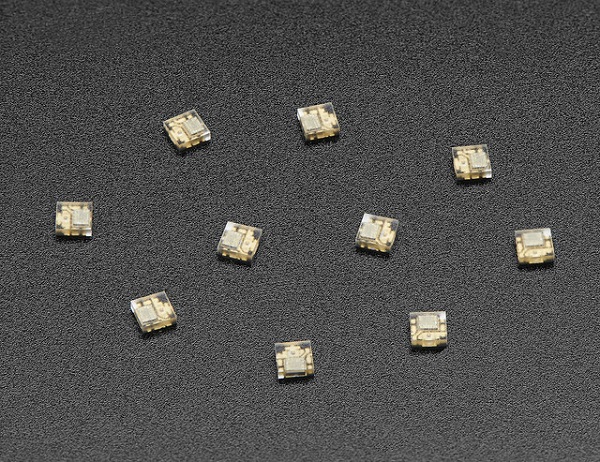The new display technology Micro LED actually has a history of over a decade. After Apple acquired LuxVue Technology, it officially became famous. Its properties- high resolution, high brightness, real-time response, and low power consumption- win hearts of many A-list high-tech companies such as Apple, Sony, Google and Facebook, as well as companies in the display industry. The development is speeding, lifting the sentiment and anticipation in the market.
 |
|
(Image: Micro LED Adafruit Industries via Flickr CC2.0) |
LEDinside collected perspectives from five academics detailing Micro LED technology, its challenges and potential markets.
Youliao Zheng, Researcher at Division of Information Technical Sciences, CAS
Micro LED is the definite goal of LED display technology. It went through the phase of first-generation display, entered that of fine-pitch display, and is now slowing marching into Micro LED’s. In terms of manufacturing techniques, Zheng sees three major challenges. The first one is to transfer Micro LED dies onto TFT backplanes to form high density 2D arrays. The second problem is to control the effect of temperature on the reliability of RGB Micro LEDs that are made with different materials. The last one is to realize high density advanced packaging (HDAP) of RGB Micro LED.
Zheng points out the development is still at an incipient stage and companies are trying out different manufacturing technologies. The challenges require knowledge from equipment providers, manufacturing companies and the academics to resolve. The supply chain will be very different from those of other display technologies. He suggests all parties, including the microelectronics industry, to collaborate to carry out the new technology.
Zhongcan Ouyang, Researcher at Division of Mathematics and Physics, CAS
Ouyang reckons backlighting should be the first market Micro LED target at this stage. Techniques used in manufacturing of Micro LED display are way more delicate and complicated than those in OLED panel production. The cost is much higher as well. He believes it’s more practical to put Gen10 and 11 LCD lines into mass production and improve the image quality to achieve 4K or even 8K resolution. Construction of those AMOLED lines in China should be complete as soon as possible to be able to supply OLED displays to all the Chinese phones.
As for Micro LED, the industry can be optimistic but not blind about its development, warned Ouyang.
Ouyang says whether Micro LED can take off depends on its bond with mobile display technology. He expects to see Micro LED be used on biometrics-related equipment and wearable devices. However, considering profitability, he still contends Micro LED should be used for either large-scale displays or backlight modules.
Jinmin Li, Professor at Institute of Semiconductors, CAS
Professor Li also thinks it’s too soon to jump to any conclusions at this point. Whereas, it’s brilliant for the industry to develop Mini LED during the transition while waiting breakthroughs of Micro LED technology. The combination of Mini LED with flexible backplanes can be used for applications such as smartphones and TVs.
Micro LED; on the other hand, has great potential as well as lots of advantages. It needs more investment and joint task forces to move on to the next R&D stage, says Li.
Dr. Xiaowei Sun, Department Head of Electrical and Electronic Engineering, Southern University of Science and Technology
Dr. Sun shares how colors of QLED is rendered using nano-sized QD phosphors. The requirements for rendering colors of Micro LED are rather stringent. For example, Micro LED displays for VR/AR devices need smaller QD phosphors, perhaps in a size of 50 microns or below. Pixels of displays are considerably small that they need extra blue or ultraviolet light to activate them. He also says using QDs to integrate with Micro LEDs is by far the best solution.
Hao-chung Kuo, Professor at National Chiao Tung University
There are plenty of applications that can use Micro LED. The VR market will witness great demand, says Professor Kuo. He also expresses that Micro LED displays, especially large ones, have more room to embed other components in the pixels to make possible intelligent displays, such as sensing-enabled Micro LED displays.












